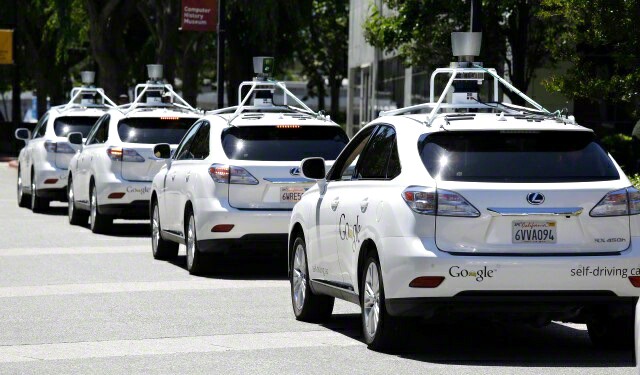Driverless Cars and the New Automobile Era

We are now about 130 years into the automobile era. Starting with Karl Benz’s patent in the 1880s the automobile quickly became widespread with Henry Ford’s model of mass production scaling up the market 100 years ago.
Since then there have been waves of significant changes. The first stage was about mechanics and engines and basic functionality. Then came the idea of design and power. Horsepower and sleek designs became top concerns. Then there was comfort and styling and customizing. Detroit introduced the concept of planned obsolescence. The 1970s oil crisis created the global demand for compact cars with an emphasis on fuel efficiency and mpg. Then in the late 20th century electronics started to creep into cars, greatly improving performance, complexity and quality.
In the first decade of this century, a fundamental change began with the introduction first of the Prius and then other hybrids. Elon Musk started up Tesla Motors and came out with the first all electric plug-in cars. GM became the first major U.S. automotive company to bring a combination electric with fuel back up to market with the Chevrolet Volt. Some of the first hydrogen fuel cell autos were produced in limited volume. So this was the decade when alternative forms of power were introduced into the industry. They were met with enthusiastic and wide receptivity by the car buying public. It seems like today almost every auto line has a hybrid and many will be introducing plug-in electrics.
In this second decade of the 21st century we are on the threshold of truly transformative change. Change that will recast what the automotive business will be for the next several decades. We are moving to the era of autonomous autos, the driverless car. We are moving from the hardware to the software stage of automobiles.
The autonomous automobile removes the single greatest safety problem in automotive history, the driver. Google has had its’ autonomous auto drive more than 1.8 million miles with only 17 accidents. Every single accident was cause by the other car with a driver. So the autonomous auto increases safety on the roads. The second thing it will do is increase productivity. If you have to drive to work or anywhere, you will be able to text, read, write or talk on the phone without any risk of these activities causing an accident.
Clearly the autonomous auto is smart and full of chips and sensors. This means that it will find the fastest way to where you are going. It will allow software to be utilized in the new world of the Internet of Things to connect to the environment. This will save time and will use less energy. Every major automotive company is committed to creating autonomous autos. Even Uber is staffing up to create them. Imagine Uber with no drivers, just smart, responsive vehicles. In a city, why would you want the cost, expense and hassle of owning a car? Various projections place the percentage of autos in the U.S. that are autonomous at between 25-35% by 2030. That is based upon current auto usage.
Once you really think about the potential of the autonomous auto, its transformative possibilities truly set in. Currently the average American uses her car an average of 101 minutes a day. The rest of the time it is sitting somewhere. That means that 90% of the time autos are not being used, just costing us in parking and depreciation. What if the autonomous autos are smart and electric? They know when they need a charge and where to get one. Then they can be running 15-20 hours per day when not being charged. This means that families may only need one car as it is always on the go. People in neighborhoods or carpools might only need one car. So the number of cars in use could greatly decrease. This might erase one of the greatest misnomers of our time: rush hour.
As anyone who drives or has ridden in a Tesla knows, there are constant software updates. In all new cars, at least in the mid to high range in terms of price, there is all kinds of software. We all have read that Google is producing the driverless car. They created the first prototype. Now most car companies are doing so as well.
Apple has an entire auto division that is now being doubled in size. So the software tech and gadget tech companies are getting into the auto business, both with autonomous autos. Both Google and Apple have significantly larger market caps than any auto company. In fact, Apple has more cash on hand than the market caps of GM and Ford combined. Hmmmm. Apple could simply buy a major auto company for its hardware mass production capability to combine with its tech expertise. It would also take away a major competitor. What would the world look like if Apple purchased GM?
The opinions and points of view expressed in this commentary are exclusively the views of the author and do not necessarily represent the views of MediaVillage/MyersBizNet management or associated bloggers.


